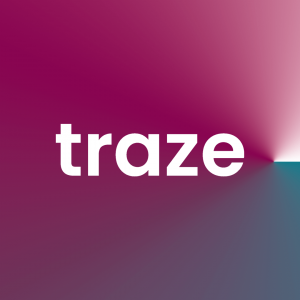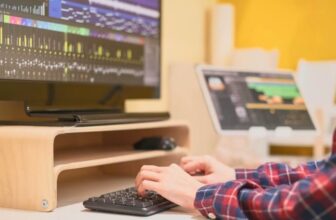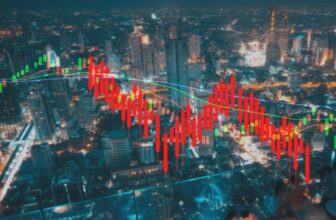
Keen on forex trading? Discover optimal timings and strategic windows as we explore the question: When is the best time to trade forex? Uncover key overlaps and market influences for a successful trading venture.
The best time to trade forex is during market overlaps, such as the London – New York session (10 am – 3 pm London time). Increased liquidity and significant currency pair movements make this period ideal for traders.
Key Takeaways:
- The Forex market is open 24 hours a day from Sunday to Friday.
- The best time to trade Forex depends on your available time and preference.
- Intraday traders should consider trading during market session overlaps for increased volatility and trading activity.
- Block out specific time for trading and prioritise it over other activities.
- Find the time that works best for you and aligns with your trading strategy.
By considering the best time to trade Forex based on market sessions and personal factors, you can optimise your trading strategy and increase your chances of success in the Forex market.
When Is the Best Time to Trade Forex
The Foreign Exchange (Forex) market is open 24 hours a day from Sunday 5:00pm EST to Friday 5:00pm EST, with the weekend being the only time it is closed to most traders. The best time to trade Forex depends on various factors, including your available time and preference. Intraday traders should consider trading during the overlap of market sessions, such as the London & New York session or the Sydney & Tokyo session, as these are the most volatile periods with increased trading activity. It is important to block out specific time in your day for trading and prioritise it over other activities. Ultimately, the best time to trade Forex is the time that works best for you and aligns with your trading strategy.
The European – US Overlap (2:30 pm – 4:30 pm GMT): A Prime Window for Forex Success
In forex trading, certain timeframes stand out as golden opportunities, and one such lucrative period is the European – US overlap from 2:30 pm to 4:30 pm GMT. During this two-hour window, the trading floors of Europe and the United States converge, creating an environment rife with possibilities for astute traders.
Optimal Liquidity for European Currencies
This overlap is particularly advantageous for trading in European currencies, notably the euro, pound sterling, and Swiss franc. The heightened activity during this period ensures optimal liquidity, offering traders the chance to engage in transactions with ease.
Currency Pair Fluctuations
The simultaneous participation of European and US markets results in more substantial fluctuations in currency pairs. For instance, the GBP/USD and EUR/GBP crosses often experience increased volatility, providing traders with ample opportunities to capitalise on market movements.
Market Intensity and News Impact
The overlap period sees a surge in overall market intensity. When significant economic news is released, such as announcements from the US or unexpected developments in Europe, it can lead to pronounced market reactions. Traders keen on riding the waves of breaking news often find this timeframe particularly exciting.
Example: Trading the GBP/USD Cross
As the London and New York markets converge, the GBP/USD cross takes centre stage. The British pound and the US dollar, two of the most traded currencies globally, witness heightened trading activity. Traders can leverage this overlap to exploit potential price movements and capitalise on the extensive liquidity available.
Strategic Positioning for Short-Term Traders
For short-term traders employing strategies like scalping or day trading, the European – US overlap provides a strategic advantage. The wider pip range movement during this timeframe enhances the potential for swift and profitable trades.
In summary, the European – US overlap is more than just a timeframe on the forex calendar; it represents a golden opportunity for traders to navigate the market with heightened liquidity, significant currency pair fluctuations, and the potential for substantial profits. Traders who strategically position themselves during this window can tap into the vibrancy of the global forex market and make the most of its dynamic nature.
The Forex Market Hours: A Unique Schedule
Understanding the distinctive schedule of the forex market is pivotal for traders seeking optimal entry points and strategic positioning. Unlike traditional markets, forex operates 24 hours a day, providing a continuous cycle of trading opportunities.
Round-the-Clock Trading
The forex market kicks off at 5 p.m. EST on Sundays and runs until 5 p.m. EST on Fridays. This continuous operation ensures that traders across different time zones have ample opportunities to participate in the market, making forex truly a global endeavour.
Varied Trading Hours
Not all hours within the 24/5 trading cycle are equal for trading. The most lucrative moments occur when multiple markets are simultaneously open, leading to heightened trading activity. During these overlaps, such as the European – US overlap, traders experience increased liquidity and substantial currency pair fluctuations.
Impact on Pip Spreads
The number of open markets directly influences pip spreads. A single market being open often results in tighter pip spreads of around 30 pips. However, the opening of two markets concurrently can see movements exceeding 70 pips, especially when major news is released, creating an environment conducive to profitable trades.
Example: European – US Overlap
As explored earlier, the European – US overlap from 2:30 pm to 4:30 pm GMT is a prime example of a period with optimal trading conditions. The convergence of the European and US markets results in heightened liquidity and increased currency pair fluctuations, presenting traders with a golden opportunity for profitable transactions.
Strategic Trading Dynamics
Savvy traders understand the importance of strategic timing. Tuesdays, Wednesdays, and Thursdays emerge as peak trading days due to heightened volatility. During the opening of the London session at 8:00 am (UK time), liquidity and volatility surge, accounting for a substantial portion of all forex transactions.
News Releases and Economic Influences
Beyond market hours and overlaps, staying informed about economic news is crucial. Major announcements, such as central bank interest rate decisions, CPI data, and GDP figures, can swiftly impact currency values, creating unexpected opportunities or risks.
In essence, the forex market’s unique schedule provides a constant ebb and flow of trading activity, offering diverse opportunities for traders worldwide. Recognising the optimal times to engage with the market and aligning strategies with key overlaps and news releases can unlock the potential for successful forex trading.
Trading Dynamics: Single vs. Multiple Markets Open
In the fast-paced world of forex, the dynamics of trading vary significantly depending on whether a single market or multiple markets are open. This fundamental aspect plays a crucial role in determining the level of activity and potential opportunities for traders.
Single Market Open: Tight Pip Spreads
When only one market is open, currency pairs tend to experience tight pip spreads of around 30 pips. This limited movement can be attributed to the absence of overlapping trading sessions, resulting in a relatively stable trading environment.
Multiple Markets Open: Heightened Activity and Fluctuations
Conversely, when more than one market is open simultaneously, the trading atmosphere intensifies. This heightened activity leads to more substantial fluctuations in currency pairs. For instance, the overlap of the European and US markets often sees movements north of 70 pips, especially when significant news is released.
Example: European – US Overlap
The European – US overlap, occurring from 2:30 pm to 4:30 pm GMT, exemplifies the impact of multiple markets being open. During this period, traders witness increased liquidity and significant currency pair movements. The GBP/USD and EUR/GBP crosses, involving European currencies, become particularly active, providing traders with ample opportunities.
Strategic Implications for Traders
Traders need to be attuned to the dynamics associated with single and multiple markets open. During single-market scenarios, strategies may focus on exploiting stable conditions, whereas, in multiple-market scenarios, traders may seek to capitalise on the heightened volatility and larger pip movements.
Navigating Market Opening Hours
The opening hours of different markets also influence trading dynamics. The London market, opening at 8:00 am UK time, marks a period of increased liquidity and volatility, accounting for a significant portion of all forex transactions. Understanding these dynamics aids traders in strategically planning their engagement with the market.
The distinction between single and multiple markets being open is a cornerstone of forex trading dynamics. Recognising the implications of these scenarios allows traders to adapt their strategies accordingly, navigating the varying levels of activity and leveraging opportunities in the ever-evolving forex market.
Currency Pairs, Trading Sessions, and Economic News: A Unified Approach
Understanding the symbiotic relationship between currency pairs, trading sessions, and economic news is pivotal for successful forex trading. Each element contributes to the dynamic nature of the market, presenting traders with diverse opportunities and challenges.
Currency Pairs and Trading Sessions
The choice of currency pairs is intrinsically linked to trading sessions. During the London – New York overlap, for example, trading in European currencies like the euro, pound sterling, and Swiss franc sees heightened activity. This symbiosis allows traders to strategically focus on specific pairs based on the active trading sessions.
Example: GBP/USD Cross during London – New York Overlap
The GBP/USD cross is particularly active during the London – New York overlap. The British pound and US dollar, both major currencies, experience increased liquidity and fluctuations. Traders may leverage this period for strategic moves, aligning their activities with the synergistic relationship between the currency pair and the active trading session.
The Impact of Economic News on Forex Trading
Economic news releases have a profound impact on forex markets, often creating sudden shifts in currency values. Key events such as central bank interest rate decisions, CPI data, and GDP figures can trigger rapid market reactions. Traders need to stay attuned to these announcements to navigate potential opportunities or risks.
Example: Interest Rate Decisions and Currency Strength
Central banks’ interest rate decisions are critical events. Higher interest rates generally attract more global investment, strengthening a country’s currency. For instance, if a central bank announces an interest rate hike, the currency may appreciate rapidly. Traders who anticipate and react swiftly to such economic news can capitalise on these market movements.
Strategic Integration of Elements
A successful trading approach involves strategically integrating currency pairs, trading sessions, and economic news. Traders may choose to align their activities with specific trading sessions that correspond to their chosen currency pairs. Additionally, they should stay vigilant during economic news releases, as these events can significantly influence market dynamics.
In conclusion, the interconnectedness of currency pairs, trading sessions, and economic news forms the backbone of effective forex trading. By comprehending and strategically integrating these elements, traders can navigate the complexities of the market, making informed decisions and seizing opportunities as they arise.
Peaks and Lulls: Decoding Daily Trading Cycles
Understanding the daily trading cycles in the forex market is crucial for traders seeking to optimise their strategies. These cycles, characterised by peaks and lulls, create distinct patterns that can influence trading dynamics throughout the week.
Peak Trading Days: Tuesday, Wednesday, and Thursday
The middle of the week, specifically Tuesday, Wednesday, and Thursday, emerges as the peak period for forex trading. During these days, the currency market experiences heightened volatility, providing traders with increased opportunities for profitable transactions.
Example: Increased Activity During Peak Days
Traders often observe that major currency pairs exhibit more significant movements and fluctuations during peak days. For instance, the GBP/USD cross may see more pronounced price swings on a Wednesday compared to a Monday. This increased activity is attributed to higher participation and trading volumes.
Lulls: Mondays and Unpredictable Fridays
Mondays are often characterised by static market conditions, with lower trading activity compared to the rest of the week. Fridays, on the other hand, can be unpredictable. As the week draws to a close, traders may witness unexpected market movements influenced by last-minute news or positioning for the upcoming weekend.
Example: Unpredictability on Fridays
Traders might encounter unforeseen price movements on Fridays, especially in the afternoon, as market participants adjust their positions before the weekend. Sudden news releases or events can contribute to heightened unpredictability, requiring traders to exercise caution during this period.
Strategic Considerations
Traders need to adapt their strategies based on the daily trading cycles. During peak days, short-term traders focusing on strategies like scalping or day trading may find more opportunities for quick, decisive trades. In contrast, Mondays and unpredictable Fridays may call for a more cautious approach due to lower activity and potential market unpredictability.
Recognising the peaks and lulls in daily trading cycles is fundamental for effective forex trading. Traders who strategically align their activities with these patterns can harness the varying market conditions to their advantage, maximising opportunities during peak periods and exercising prudence during lulls.
Navigating Forex Overlaps: From Tokyo to London to New York
In the world of forex trading, understanding the unique dynamics during specific market overlaps is essential. Let’s delve into the Tokyo – London overlap, the London – New York overlap, and the intriguing concept of the London Fix, each presenting distinctive opportunities for traders.
Tokyo – London Overlap: A Time for Rest or Research
During the Tokyo – London overlap, typically in the early morning hours, liquidity tends to be thin. This period offers traders a choice – a time for rest, as European traders begin their day, or an opportunity for research and preparation. With European traders just starting their workday, trading can be relatively uneventful during this overlap.
Example: Ideal for Research and Preparation
Traders may opt to use the Tokyo – London overlap to gather information, analyse market trends, and strategise for the upcoming London session. It’s a moment to take a step back, observe potential developments, and make informed decisions for the active trading sessions ahead.
London – New York Overlap: The Forex Trading Powerhouse
According to FXLIQUIDITY, the London – New York overlap, around 10 am to 3 pm London time, is the busiest time of the day. Traders from the two largest financial centres, London and New York, engage in intense market activities. This overlap is known for significant currency pair movements, especially when key news reports from the U.S. and Canada are released.
Example: Big Moves and News Impact
During the London – New York overlap, substantial market movements can occur. If crucial economic data or news reports emerge from the U.S. or Canada, these can cause notable shifts in currency values. Traders often position themselves strategically during this period to capitalise on these impactful market events.
The London Fix: Navigating Daily Currency Price Fluctuations
The concept of the London Fix adds another layer to forex trading. Set at 4 pm London time, this daily fix establishes a reference point for currency prices in commercial transactions. Banks and financial institutions use this rate to set currency exchange rates, impacting daily currency price fluctuations.
Example: Flurry of Trading Activity Before Fixing Time
In the lead-up to the London Fix at 4 pm, traders may observe a flurry of trading activity in the market, generally 15 to 30 minutes before fixing time. This abrupt activity reflects the urgency of market participants to position themselves before the daily rate is determined, influencing subsequent currency exchange rates.
In summary, navigating the various overlaps and unique events like the London Fix requires a strategic approach. Traders can use these periods to rest, research, and capitalise on the heightened activity, aligning their actions with the dynamic nature of the global forex market.
Understanding Market Sessions and Their Impact on Forex Trading
The Forex market operates in different sessions, including the Sydney, Tokyo, London, and New York sessions. These sessions are based on the business hours of specific regions and determine the active trading hours for those locations. Trading during market sessions that overlap, such as the London & New York session or the Sydney & Tokyo session, can provide increased volatility and trading opportunities. It is important to avoid trading in-between market sessions when volatility is reduced. Understanding the timing of market sessions can help traders optimise their trading strategy and take advantage of the most active and profitable hours.
Key Market Sessions and Their Timings
Below is a table detailing the timings of the major Forex market sessions:
| Market Session | Opening Time (Local Time) | Closing Time (Local Time) |
|---|---|---|
| Sydney | 10:00 PM | 7:00 AM |
| Tokyo | 12:00 AM | 9:00 AM |
| London | 8:00 AM | 5:00 PM |
| New York | 1:00 PM | 10:00 PM |
As seen in the table, the Sydney session starts at 10:00 PM local time, followed by Tokyo, London, and New York. The timings may vary slightly due to daylight saving changes in different regions. Traders should take these timings into account when planning their trading activities.
“Trading during market sessions that overlap can provide increased volatility and trading opportunities.”
By trading during the overlapping sessions, traders can benefit from increased volatility as multiple markets are active simultaneously. For example, during the London & New York session overlap, which occurs from 1:00 PM to 5:00 PM local time, there is increased trading activity as traders from both regions participate, resulting in higher liquidity and tighter spreads.
Conversely, it is important to avoid trading during periods of reduced volatility, such as between the New York and Tokyo sessions, when the market is relatively quiet. During these times, price movements may be limited, making it challenging to find profitable trading opportunities.
Understanding the impact of market sessions on Forex trading allows traders to maximise their opportunities and optimise their strategies. By aligning trading activities with the most active and volatile periods, traders can increase their chances of success in the Forex market.
Determining the Best Time for Your Trading Schedule
When it comes to trading Forex, one of the most important factors to consider is your personal trading schedule. Every trader has different time constraints and availability, so finding the optimal time to trade that aligns with your schedule is crucial. By carefully planning your daily routine and identifying pockets of free time, you can determine when you can dedicate yourself to trading.
Consider the following steps to determine the best time for your trading schedule:
- Assess the Time You Have Available: Take a close look at your daily routine and identify the time slots that you can commit to trading. This could include early morning hours, lunch breaks, or evenings. By understanding your availability, you can ensure that you have enough time and focus to dedicate to trading.
- Consider Your Work and Family Commitments: Take into account any work or family commitments that may impact your trading schedule. If certain times of the day are consistently busy or unavailable, it is important to avoid those periods and choose alternative trading times.
- Allocate Specific Time for Trading: Once you have identified the time slots that work best for you, make it a priority to allocate specific time for trading. Even if you can only dedicate a couple of hours each day, consistency is key. By establishing a routine, you can develop a disciplined approach to trading.
Remember, the goal is to trade during the most active market sessions to maximise your trading opportunities. Although Forex is a 24-hour market, certain sessions overlap and have higher volatility, providing greater trading potential. Aligning your trading schedule with these peak market hours can significantly improve your chances of success.
“By mapping out your daily schedule and identifying pockets of free time, you can determine when you can focus on trading.”
The Most Active Forex Trading Sessions
Understanding the forex market sessions is essential for optimising your trading schedule. The forex market operates in several sessions, each characterised by different levels of activity and volatility. By trading during the most active sessions, you increase the likelihood of finding profitable trading opportunities. The four major forex market sessions and their corresponding time zones are:
| Forex Market Session | Geographical Area | Time Zone |
|---|---|---|
| Sydney Session | Australia, New Zealand, and Asia | GMT+11 or GMT+10 (during daylight saving time) |
| Tokyo Session | Asia, with a focus on Japan | GMT+9 |
| London Session | Europe, with a focus on the United Kingdom | GMT+1 (GMT+2 during daylight saving time) |
| New York Session | North America, with a focus on the United States | GMT-4 (GMT-5 during daylight saving time) |
The most volatile periods occur when two or more sessions overlap. The London and New York sessions overlap for a few hours, creating a period of increased trading activity and market volatility. Similarly, the Sydney and Tokyo sessions overlap, providing another window of opportunity for traders.
By aligning your trading schedule with these peak hours, you can take advantage of market volatility and maximise your trading potential. Remember to remain consistent with your routine and adapt to any changes in the market or your personal schedule.
The Best Time to Trade Specific Currency Pairs
The optimal time to trade specific currency pairs in the forex market depends on their correlation with market sessions and the volatility of those sessions. By analysing the characteristics of different currency pairs and their relationship with market timings, traders can determine the best time to trade for optimal results.
For instance, currency pairs involving the US dollar (USD) tend to be most active and volatile during the overlap of the London and New York sessions. On the other hand, currency pairs involving the Japanese yen (JPY) may experience increased volatility during the overlap of the Sydney and Tokyo sessions.
To make informed trading decisions, it is crucial to understand the relationship between currency pairs and market sessions. This understanding allows traders to capitalise on the most active and profitable hours for specific currency pairs. By aligning their trading activities with peak times for forex trading, traders can increase their chances of success in the forex market.
| Currency Pair | Best Time to Trade |
|---|---|
| EUR/USD | During the overlap of the London and New York sessions |
| GBP/USD | During the overlap of the London and New York sessions |
| USD/JPY | During the overlap of the Sydney and Tokyo sessions |
| AUD/USD | During the overlap of the Sydney and Tokyo sessions |
It is important for traders to conduct thorough analysis and stay updated on market session times to identify the optimal trading windows for specific currency pairs. By trading during the peak times, traders can take advantage of increased liquidity, volatility, and trading opportunities, ultimately maximising their chances of success.
Factors to Consider for Profitable Forex Trading
In addition to timing based on market sessions and currency pairs, there are other factors to consider for profitable forex trading. One key factor is seasonality, as certain months or periods of the year may have higher volatility and trading opportunities.
For example, the start of the year is often characterised by increased market activity due to traders returning from holidays and new year’s optimism.
Another important consideration is the impact of major world events, such as political turbulences or economic announcements, which can trigger increased volatility at any time of the day. Traders should stay informed and be prepared for unexpected market movements.
| Factors to Consider for Profitable Forex Trading | |
|---|---|
| Seasonality | Certain months or periods of the year may have higher volatility and trading opportunities |
| Example: | The start of the year is often characterised by increased market activity due to traders returning from holidays and new year’s optimism |
| Major World Events | Political turbulences or economic announcements can trigger increased volatility at any time of the day |
Conclusion
The best time to trade Forex depends on multiple factors, including market sessions, currency pairs, personal trading schedule, and external events. To optimise your trading strategy, it is important to analyse these factors and determine the optimal times for trading.
Focus on the most active and volatile market sessions, such as the overlap of the London & New York sessions or the Sydney & Tokyo sessions, to maximise trading opportunities. By aligning these sessions with your available time, you can increase your chances of success in the Forex market.
Consistency is key in Forex trading. Establish a routine and allocate specific time for trading, even if it’s just a couple of hours during the most active market periods. Adapting to market conditions and staying informed about major world events that can impact currency volatility is crucial for a profitable trading experience.
Remember, the best time to trade Forex is unique to each trader. Analyse the dynamics of market sessions, currency pairs, and your personal schedule to develop a trading plan that suits your needs and objectives. Stay disciplined, stay informed, and continually adapt to optimise your trading strategy in the dynamic world of Forex.
FAQ
The best time to trade Forex depends on various factors, including your available time and preference. Intraday traders should consider trading during the overlap of market sessions, such as the London & New York session or the Sydney & Tokyo session, as these are the most volatile periods with increased trading activity. Ultimately, the best time to trade Forex is the time that works best for you and aligns with your trading strategy.
The Forex market operates in different sessions, including the Sydney, Tokyo, London, and New York sessions. These sessions are based on the business hours of specific regions and determine the active trading hours for those locations. Trading during market sessions that overlap, such as the London & New York session or the Sydney & Tokyo session, can provide increased volatility and trading opportunities. It is important to avoid trading in-between market sessions when volatility is reduced.
One of the key factors in determining the best time to trade Forex is your personal trading schedule. Consider the time you have available in your day to dedicate to trading and identify any time constraints, such as work or family commitments. By mapping out your daily schedule and identifying pockets of free time, you can determine when you can focus on trading. It is essential to be consistent with your trading routine and allocate specific time for trading, even if it is just a couple of hours during the most active market sessions.
The best time to trade specific currency pairs depends on their correlation with market sessions and the volatility of those sessions. For example, currency pairs involving the US dollar (USD) are most active and volatile during the overlap of the London & New York sessions. On the other hand, currency pairs involving the Japanese yen (JPY) may see increased volatility during the overlap of the Sydney & Tokyo sessions. It is important to analyse the characteristics of different currency pairs and their correlation with market sessions to determine the best time to trade them for optimal results.
In addition to timing based on market sessions and currency pairs, there are other factors to consider for profitable Forex trading. One key factor is seasonality, as certain months or periods of the year may have higher volatility and trading opportunities. Another important consideration is the impact of major world events, such as political turbulences or economic announcements, which can trigger increased volatility at any time of the day. Traders should stay informed and be prepared for unexpected market movements.

















